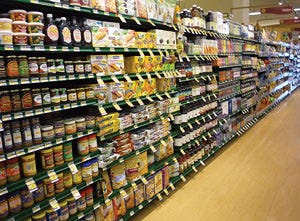January 30, 2014
|
The average grocery store logs between 35,000 and 40,000 SKUs and nearly 70 percent of in-store purchases are impulse buys, says consumer packaged goods (CPG) company and packaging materials and services supplier Georgia-Pacific (www.gpinnovates.com). With so many products vying for consumers' attention, the typical retail environment has turned into a product battlefield. While sustainability currently is top-of-mind for virtually all CPG companies, shelf impact remains a high priority.
Essential in the marketing and sales of almost every product, packaging not only protects the integrity of the item inside—it also promotes the brand and attracts customers. Packaging often serves as the first point of contact a consumer has with a new product. A package's color, texture, graphics and branding all have the potential to make or break a sale. The typical consumer takes three to seven seconds to notice a product on a store shelf and make a purchasing decision. With so much of a product's brand integrity tied to package design, any redesign—big or small—is an important decision.
By taking a closer look at the entire packaging supply chain, CPGs can achieve both profitability and sustainability goals without compromising the integrity of the product or its shelf impact. Even the smallest changes can yield significant results.
Proportional results
Two ways to optimize a package without incorporating drastic changes include
• Use a lighter weight material. This can improve sustainability results and reduce costs.
• Choose an alternative material. For example, microflute is a lighter weight material that offers the strength of traditional corrugated and allows for superior graphic reproduction. Its benefits allow the package design to remain intact while offering clear sustainability results.
A small package redesign may not involve significant financial investments, but it also usually goes undetected by the consumer. Having an open dialog with your design team and supplier is critical to discovering the right opportunities for optimizing your package.
Although major package redesigns require a larger initial investment, they typically yield more significant sustainability results. As new products are regularly added to retail shelves, having an eye-catching package becomes crucial to maintaining market share. Studies have shown that the best way to attract consumer attention is to revitalize packaging. Brand owners can present the product with a new look and feel by reducing overall material usage, incorporating new artwork, and overhauling the overall package design. A revitalized package design can result in a refreshed product image, increased overall sustainability and improved sales.
More information is available: |
Georgia-Pacific, 404/652-4000. www.gpinnovates.com. |
You May Also Like



